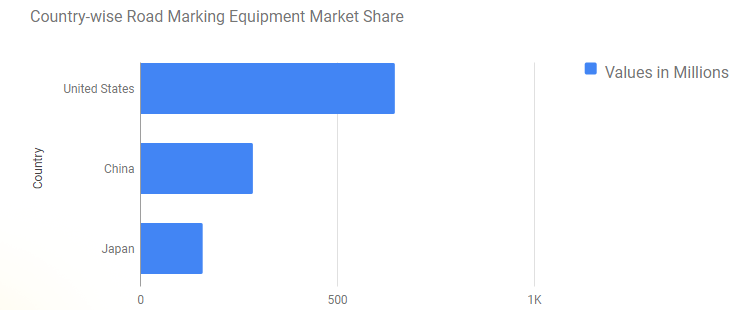The smooth flow of traffic relies on a silent language – road markings. These painted lines, symbols, and legends guide drivers, ensure safety, and enhance the overall driving experience. Applying these markings efficiently and accurately necessitates specialized equipment, making the road marking equipment market a crucial contributor to safe and well-maintained road networks. Fueled by rising infrastructure investments and growing emphasis on road safety, this market is experiencing steady growth. Let’s explore the diverse applications of road marking equipment and delve into the exciting opportunities shaping this industry.
The Art of the Stripe: Applications of Road Marking Equipment
Road marking equipment comes in various forms, each tailored to specific applications:
- Line Striping Machines: These workhorses dispense paint or thermoplastic materials to create lane lines, edge lines, and centerlines. They can be self-propelled or truck-mounted, offering flexibility for different road configurations.
- Symbol and Legend Stencils: For clear communication with drivers, stencils are used to apply markings like arrows, crosswalks, and stop signs. Modern equipment often integrates stencil capabilities with line striping machines for efficient application.
- Thermoplastic Applicators: Thermoplastic materials offer superior durability and reflectivity compared to paint. Specialized applicators heat and precisely apply these materials for long-lasting road markings.
- Cold-Paint Equipment: For temporary markings or quick touch-ups, cold-paint sprayers and handheld applicators provide a cost-effective solution.
- Reflective Bead Dispensers: Enhancing nighttime visibility is crucial for safety. Dispensers apply reflective glass beads onto freshly painted lines, ensuring drivers can see markings clearly in low-light conditions.
Get Exclusive Sample Copy of the Report: https://www.futuremarketinsights.com/reports/sample/rep-gb-18756
A Market with a Clear Direction: Growth Opportunities
The road marking equipment market is experiencing a surge in popularity driven by several key trends:
- Rising Infrastructure Investment: Governments around the world are prioritizing investments in road infrastructure development and maintenance. This translates to a growing demand for equipment to apply new road markings and refresh existing ones.
- Focus on Road Safety: Properly applied road markings are vital for preventing accidents. Regulatory bodies are mandating specific line types and reflective properties, driving innovation in equipment design.
- Urbanization and Traffic Growth: Rapidly expanding cities lead to congested roads. Clear and well-maintained road markings are essential for managing traffic flow and ensuring safety in these urban environments.
- Advancements in Technology: Manufacturers are developing equipment with automated features, improved control systems, and data recording capabilities. This allows for more precise application, efficient operations, and better quality control.
- Sustainability Considerations: The development of eco-friendly paints and water-based materials is gaining traction. Equipment that facilitates the use of these sustainable options is becoming increasingly valuable.
According to a Future Market Insights (FMI) report, the global road marking equipment market value totaled USD 1,347.7 million in 2023. Over the assessment period, global road marking equipment demand is projected to increase at a CAGR of 5.9%, leading to total market valuation reaching USD 2,382.4 million by 2033.

Challenges and Considerations
The road marking equipment market also faces some hurdles:
- Skilled Labor Shortage: Operating and maintaining sophisticated road marking equipment requires specialized training. Addressing this skills gap is crucial for maximizing equipment utilization.
- Weather Dependence: Road marking application is often weather-dependent, as rain or high winds can compromise the adhesion of paint or thermoplastic materials.
- Traffic Disruptions: Road marking projects can cause temporary traffic disruptions. Optimizing application processes and utilizing quick-drying materials can minimize these disruptions.
Get Full Report Now: https://www.futuremarketinsights.com/checkout/18756
